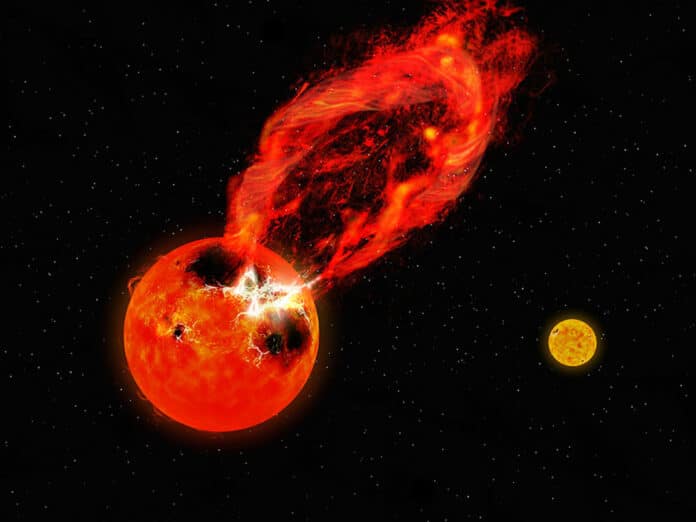Superflares from some stars have been observed that are more than ten times bigger than the biggest solar flare ever observed on the Sun. Space weather is a term used to describe how solar flares’ hot, ionized gas affects the atmosphere around the Earth.
The evolution of any planets that form orbiting the star, or the evolution of any life that forms on those planets, must be significantly impacted by more powerful superflares. However, it is unclear exactly how superflares and prominence eruptions on stars happen.
Using ground-based and space-based observations, a team of Japanese astronomers has captured a more complete picture of a superflare on a star. The team observed flare started with a very massive, high-velocity prominence eruption.
The 3.8-m Seimei Telescope in Japan and the Transiting Exoplanet Survey Satellite (TESS) were used by a team at Kyoto University led by Shun Inoue to keep an eye on the binary star system V1355 Orionis, which is known to produce large-scale superflares routinely. Four hundred light years away, in the constellation Orion, is the star V1355 Orionis.
The team’s continuous, high-temporal resolution measurements successfully captured a superflare. Data analysis reveals that the prominence eruption, a phenomenon, is where the superflare started. Even the most conservative estimates far exceed the star’s escape velocity (347 km/s), demonstrating that the prominence eruption was capable of escaping the star’s gravity and evolving into Coronal Mass Ejections (CMEs).
Calculating the eruption’s velocity requires making assumptions about aspects that aren’t directly observable. The prominent eruption, which carried trillions of tonnes of material, was also one of the largest ever seen.
Journal Reference:
- Shun Inoue, Hiroyuki Maehara, Yuta Notsu, Kosuke Namekata, Satoshi Honda, Keiichi Namizaki, Daisaku Nogami, Kazunari Shibata. Detection of a High-velocity Prominence Eruption Leading to a CME Associated with a Superflare on the RS CVn-type Star V1355 Orionis. The Astrophysical Journal, 2023; 948 (1): 9 DOI: 10.3847/1538-4357/acb7e8
